Voyager Space Holdings sets it sights on space stations with majority stake in Nanoracks
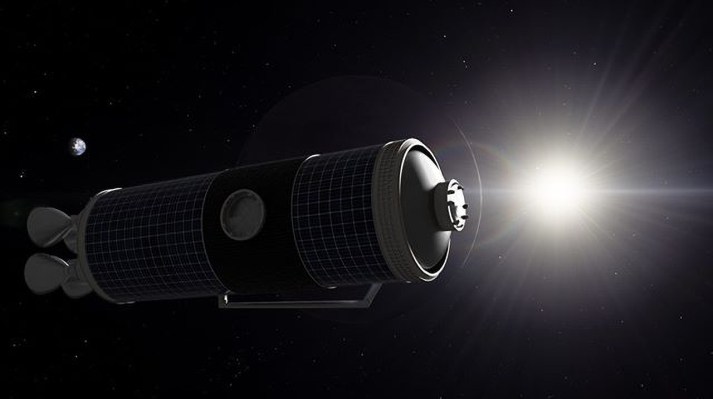
Voyager Space Holdings has added X.O. Markets, the parent of commercial space service venture Nanoracks, to its growing catalogue of space companies. The agreement was first announced last December .
This is Voyager’s fourth majority stake acquisition of a space company since its founding in October 2019, and it won’t be its last. Voyager CEO Dylan Taylor told TechCrunch that he anticipates the company will announce two to four more acquisitions this year. It’s an aggressive strategy, but key to understanding Voyager’s business model.
“A lot of people confuse us with a fund or private equity strategy, or some kind of a financial instrument, for lack of a better word, and we’re really none of those things,” Taylor said. “We’re an operating company.”
Voyager wants to reach the same level of capability as the space “primes,” or primary companies, in seven to 10 years. To get there, it’s pursued a majority stake in a series of space ventures to build out its portfolio of capabilities. Notably, Voyager has always never opted for 100% equity in these companies, and it operates in a relatively decentralized way. These business decisions help keep innovation flourishing amongst Voyager’s many ventures, Taylor said.
The typical strategy in private equity — to purchase two competing companies, merge them and sell them onto another financial buyer — doesn’t ultimately spur growth of the new space economy, he pointed out.
“[That strategy is] really not how you capture value in space,” he said. “You capture value in space by Capability A, marrying it with Capability B and unlocking a new Capability C that’s higher up on the food chain.”
The company also plans to go public via a traditional initial public offering sometime around the third quarter of this year. It anticipates filing the S-1 at some point this summer, Taylor said. He declined to provide further details of the recent acquisition.
Voyager Space Holdings to acquire multi-launch site startup The Launch Company
Voyager’s previous major acquisitions have been with Pioneer Astronautics, an R&D company that performs, amongst other things, research into supporting life in space; advanced robotics startup Altius Space Machines; and The Launch Company, a launch support company that provides standardized hardware and equipment to launch providers.
The newest acquisition, Nanoracks, has been involved in more than 1,000 projects with the International Space Station, most importantly installing the first commercial airlock on the ISS. Last November, the company also entered into a partnership with the Abu Dhabi Investment Office to research agricultural solutions in challenging physical environments, like the desert — or space.
Perhaps the most interesting of Nanoracks’ endeavors is what it calls its Outpost program: building and operating completely commercial space stations out of the spent upper stages of launch vehicles and other space debris. Nanoracks will be launching a demonstration mission onboard a SpaceX mission next month.
The four acquisitions taken together — launch support, advanced robotics, a research company and now Nanoracks — clearly point to a future in which Voyager is primed to build and operate commercial space stations. While that future is still far off, it’s closer than one might think.
“The last 10 years of the industry was defined by getting to orbit,” Taylor said. “I think the next 10 years will be about destinations. I think it’s highly likely we’re going to have somewhere between eight-12 space stations in orbit by 2030.”
More new space consolidation as Voyager Space Holdings acquires Pioneer Astronautics
Despite economic downturn, space startup funding defies gravity

What are you looking for?
Most popular topics.
- Sustainable Aviation Fuel (SAF)
02 August 2023
Voyager space and airbus announce joint venture to build and operate starlab.
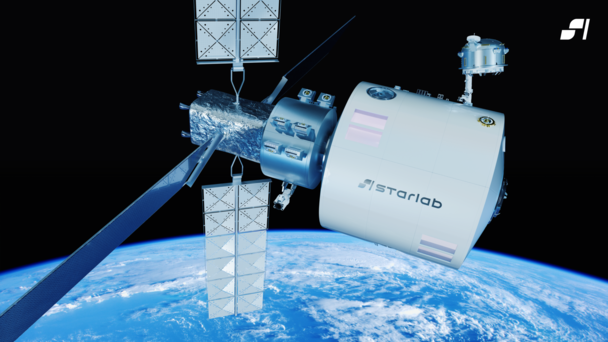
DENVER – 02 August, 2023 - Voyager Space (Voyager), a global leader in space exploration, and Airbus Defence and Space (Airbus), the largest aeronautics and space company in Europe, today announced an agreement paving the way for a transatlantic joint venture to develop, build, and operate Starlab, a commercial space station planned to succeed the International Space Station. The US-led joint venture will bring together world-class leaders in the space domain, while further uniting American and European interests in space exploration.
“We are proud to charter the future of space stations with Airbus,” says Matthew Kuta, President at Voyager Space. “The International Space Station is widely regarded as the most successful platform for global cooperation in space history, and we are committed to building on this legacy as we move forward with Starlab. We are establishing this joint venture to reliably meet the known demand from global space agencies while opening new opportunities for commercial users.”
Voyager was awarded a $160 million Space Act Agreement (SAA) from the National Aeronautics and Space Administration (NASA) in December 2021 via Nanoracks , part of Voyager’s exploration segment. Part of NASA’s Commercial Low Earth Orbit Development Program, this SAA sets the foundation to create Starlab, a continuously crewed, free-flying space station to serve NASA and a global customer base of space agencies and researchers. The program’s mission is to maintain continued human presence and American leadership in low-Earth orbit (LEO). Today’s announcement builds on an agreement made public in January 2023 , where Voyager selected Airbus to provide technical design support and expertise for Starlab.
“With a track record of innovation and technological firsts, Airbus prides itself on partnering with companies that are looking to change history,” said Jean-Marc Nasr, Head of Space Systems at Airbus. “This transatlantic venture with footprints on both sides of the ocean aligns the interests of both ourselves and Voyager and our respective space agencies. This pioneers continued European and American leadership in space that takes humanity forward. Together our teams are focused on creating an unmatched space destination both technologically and as a business operation.”
In addition to the US entity, Starlab will have a European joint venture subsidiary to directly serve the European Space Agency (ESA) and its member state space agencies.
This announcement follows a major design milestone in Starlab’s development, the Systems Requirements Review (SRR), which baselines the major space systems, technical readiness, and ability to meet NASA’s mission and safety requirements. The Starlab SRR, was completed in June 2023 in coordination with NASA’s Commercial LEO Development Program team.
“Today marks a major step forward for the future of commercial space destinations,” continues Kuta. “We are proud to have NASA’s trust to build the replacement for the ISS, a partnership that expands Starlab’s ecosystem to global space agencies, and a team that is mission driven and dedicated to reimagining the future.”
The implementation of the joint venture will be subject to applicable regulatory approvals.
About Airbus
Airbus pioneers sustainable aerospace for a safe and united world. The Company constantly innovates to provide efficient and technologically-advanced solutions in aerospace, defence, and connected services. In commercial aircraft, Airbus offers modern and fuel-efficient airliners and associated services. Airbus is also a European leader in defence and security and one of the world's leading space businesses. In helicopters, Airbus provides the most efficient civil and military rotorcraft solutions and services worldwide.
About Voyager Space
Voyager Space is dedicated to building a better future for humanity in space and on Earth. With over 35 years of spaceflight heritage and over 2,000 successful missions, Voyager is powering the commercial space revolution. Voyager delivers exploration, technology, and defense solutions to a global customer base that includes civil and national security agencies, commercial companies, academic and research institutions, and more.
Cautionary Statement Concerning Forward-Looking Statements
This press release contains “forward-looking statements.” All statements, other than statements of historical fact, including those with respect to Voyager Space, Inc.’s (the “Company’s”) mission statement and growth strategy, are “forward-looking statements.” Although the Company’s management believes that such forward-looking statements are reasonable, it cannot guarantee that such expectations are, or will be, correct. These forward-looking statements involve many risks and uncertainties, which could cause the Company’s future results to differ materially from those anticipated. Potential risks and uncertainties include, among others, general economic conditions and conditions affecting the industries in which the Company operates; the uncertainty of regulatory requirements and approvals; and the ability to obtain necessary financing on acceptable terms or at all. Readers should not place any undue reliance on forward-looking statements since they involve these known and unknown uncertainties and other factors which are, in some cases, beyond the Company’s control and which could, and likely will, materially affect actual results, levels of activity, performance or achievements. Any forward-looking statement reflects the Company’s current views with respect to future events and is subject to these and other risks, uncertainties and assumptions relating to operations, results of operations, growth strategy and liquidity. The Company assumes no obligation to publicly update or revise these forward-looking statements for any reason, or to update the reasons actual results could differ materially from those anticipated in these forward-looking statements, even if new information becomes available in the future.
Your contact
Ralph Heinrich
Head of External Communications - Airbus Space Systems
Francisco Lechón
External Communications - Airbus Space Systems, Spain
Jeremy Close
External Communications - Airbus Space Systems, UK
Guilhem Boltz
External Communications - Airbus Space Systems, France
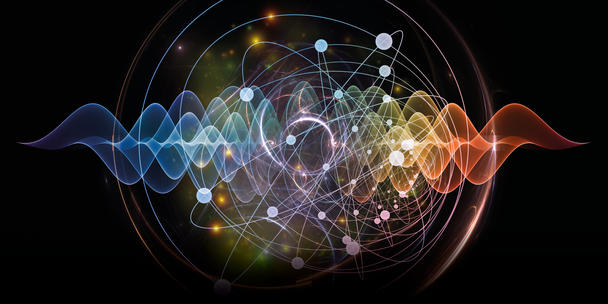
Innovation: Shaping the future of aerospace
Assets available for download, artist view starlab - mediumres - copyright starlab space llc, artist view starlab - lowres - copyright starlab space llc.
Png 303.27 KB
Artist view Starlab - highres - Copyright Starlab Space LLC
Png 12.17 MB
Communiqué de Presse
Pdf 270.31 KB
Presseinformation
Pdf 172.19 KB
Comunicado de Prensa
Pdf 170.33 KB
Press Release
Pdf 205.55 KB
- Human Space Flight
- Manned spaceflight
- Orbital infrastructure
Space Latest News
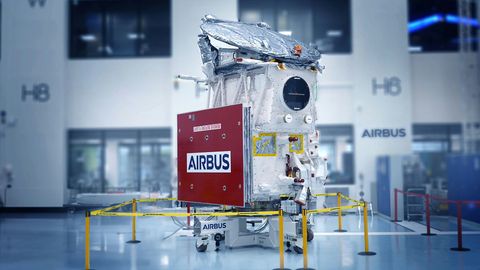
EarthCARE satellite set to explore the Earth’s skies
Eutelsat 36d airbus-built satellite successfully launched.
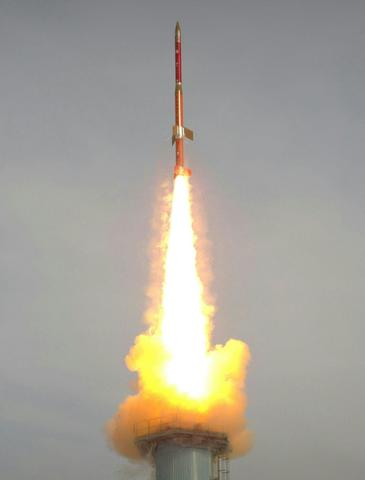
Airbus-built TEXUS sounding rockets take to the skies to conduct experiments in microgravity
Covering the business and politics of space
Voyager Space Holdings to acquire majority stake in Nanoracks

- Click to share on X (Opens in new window)
- Click to share on Facebook (Opens in new window)
- Click to share on LinkedIn (Opens in new window)
- Click to share on Reddit (Opens in new window)
- Click to email a link to a friend (Opens in new window)
- Click to share on Clipboard (Opens in new window)

WASHINGTON — Voyager Space Holdings, a company that has acquired several space ventures, is taking a majority stake in commercial space station company Nanoracks, the two firms announced Dec. 23.
Voyager announced it would take a majority stake in XO Markets, the parent company of Nanoracks. The companies did not disclose terms of the agreement. “Voyager is contributing capital in this transaction and future based on needs, allowing us to meet future demands,” Jeff Manber, chief executive of Nanoracks, said in response to questions about the specifics of the agreement.
Nanoracks announced in September that it was working on a $20 million funding round in cooperation with investment bank Cambridge Wilkinson to support its future activities. Nanoracks spokesperson Abby Dickes said the Voyager agreement is in place of that round. “Nanoracks elected for longer term scalability with the Voyager team, rather than a straight Series B,” she said.
Nanoracks, founded in 2009, started by flying experiments to the International Space Station. It expanded to satellite deployment, arranging to fly cubesats and other small satellites to the ISS to be deployed from a Japanese airlock there.
Demand for those satellite deployment services led Nanoracks to pursue development of Bishop, a commercial airlock that can be used for releasing satellites and hosting experiments . Bishop was flown to the station on a SpaceX commercial cargo mission earlier this month, and attached to the station by the Canadarm2 robotic arm Dec. 19.
“Over the past decade my team and I have worked to grow Nanoracks from a garage-based startup into the first commercial space company with customers,” Manber said in a statement about the deal with Voyager. “With Voyager, we’re confident in our expanded team’s ability to continue to deliver game-changing technology industry-wide.”
Nanoracks has discussed long-term plans to develop commercial space stations through its Outpost program, where it converts upper stages of launch vehicles into modules. Nanoracks plans to conduct its first in-space test of that technology in 2021.
The concept of converting upper stages into space station modules is not new, but Nanoracks believes that advances in robotic technologies could allow such conversions to be done with a minimum of human labor. The concept also got an endorsement in the report accompanying the fiscal year 2021 omnibus spending bill passed by Congress Dec. 21, which directs NASA to conduct “an assessment of the benefits and challenges of using repurposed upper stages as free-flying platforms.”
The agreement to take a majority stake in Nanoracks is the fourth acquisition by Voyager Space Holding since it started in October 2019. It previously acquired space technology companies Altius Space Machines and Pioneer Astronautics. In November, it acquired The Launch Company , a provider of rocket and spacecraft components, and ground equipment for launch sites.
The Nanoracks deal fits into Voyager’s approach to acquire later-stage companies generating significant revenue, rather than startups. Voyager offers those companies access to long-term funding as well as shared infrastructure, such as human resources.
“Our model is best suited for companies like Nanoracks, who are at the forefront of innovation and growing rapidly,” Matthew Kuta, president and chief operating officer of Voyager, said in a statement. “With Voyager’s support, Nanoracks can continue to do what it does best: develop in-space services and technology that is poised to transform life on Earth and in space.”
Jeff Foust writes about space policy, commercial space, and related topics for SpaceNews. He earned a Ph.D. in planetary sciences from the Massachusetts Institute of Technology and a bachelor’s degree with honors in geophysics and planetary science... More by Jeff Foust

Sign up for a SpaceNews newsletter
Get top stories, military space news and more delivered to your inbox.
Latest News
- Government/Military
Kratos Demonstrates Virtualized Ground System for U.S. Army Futures Command Over SES O3b Constellation
Us space force awards l3harris contract option for space surveillance program , apogeo space taps korean company innospace for launch services, uk rocket company orbex raises $21m in funding, telespazio’s board appoints gabriele pieralli as new ceo, uk space agency brings financial boost to startups, satellogic is relocating to the us, announces crypto investment in 2023 results, iceye raises $93m, led by finnish sovereign wealth fund solidium, sustainability, xprize picks satcom companies for space-based wildfire detection competition, kepler, tesat, and airbus partner on optical network for esa hydron program , abs appoints mark rigolle as ceo , us space systems command rfps are imminent for two new satcom programs.
- Connectivity
Intelsat Secures Two New LatAm Broadcast Deals
Aerospacelab acquires space and astronomy tech firm amos , comtech partners with eutelsat oneweb to deliver leo connectivity to antarctica, ovzon wins first spanish renewal, techcrunch report sheds light on spacex’s pre-starlink financials, comtech completes 911 services upgrade for the state of arizona.
- Cybersecurity
UK Space Agency Enters Cybersecurity Partnership with Space ISAC
Viasat opens new international headquarters in london, astroscale completes rendezvous phase of adras-j demo, space isac signs landmark french cybersecurity agreement, rocket lab wins $32m space systems command contract for tactically responsive space mission, mda space unveils new robotics product line mda skymaker, astranis introduces more powerful geo satellite omega , mobile connectivity, kongsberg wins norwegian maritime deal.
- Space Economy
World Economic Forum Report Paints Bright Future for the Space Economy
Delta iv heavy launches nrol-70 in last mission before switch to vulcan rocket, eutelsat, british antarctic survey bring leo satellite services to the south pole, tesat finishes construction of us facility, spire taps neuraspace for space traffic management platform, iridium signs five-year contract with l3harris for satellite time and location service, gilat wins multi-million dollar in-flight connectivity modems deal, blackswan space secures pre-seed funding, hughes to build gray eagle unmanned aircraft system for general atomics aeronautical systems, hawkeye 360 clusters 8 and 9 launched on spacex bandwagon-1 rideshare mission, euroconsult and spacetec partners to merge, forming novaspace, manufacturing, sierra space debuts eclipse satellite bus line, sidus space offers spacecraft mission control center , kratos, telesat, and cobham demonstrate virtualized satcom ground system for us army, imagery and sensing, muon space wins over $60m in contracts for muon halo 10-satellite constellation, mitsubishi joins starlab space joint venture, bright ascension recieves $3m in funding , mynaric starts volume production for condor mk3 space laser terminal, iridium completes satelles acquisition and introduces iridium satellite time and location (stl), satcube releases terminal rental service for media/ngo organizations, hawkeye 360 secures $40m debt financing from svb, hughes flat panel terminal is available on the eutelsat oneweb network , terran orbital grows revenue 44% in 2023, regains listing compliance, gilat details amplifier and modem contracts worth $25m in total, voyager space holdings completes acquisition of the launch company.
- Mergers and Acquisitions
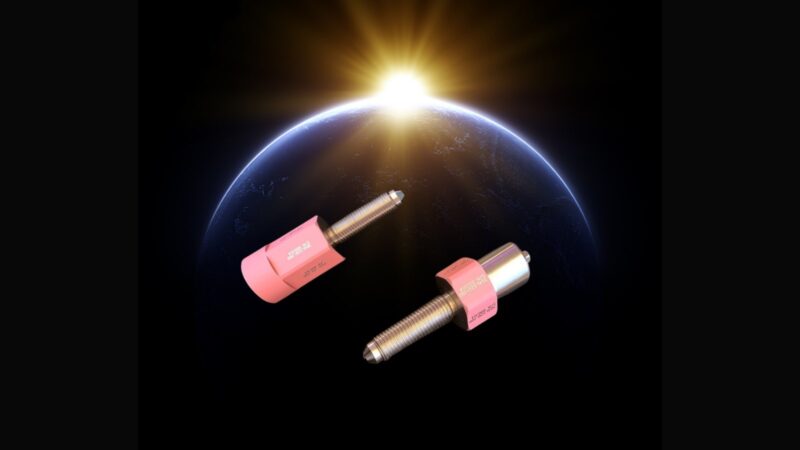
The Launch Company offers a line of quick disconnect fittings for rockets and spacecraft. Photo: The Launch Company
Voyager Space Holdings has completed its acquisition of The Launch Company , it announced April 2. The acquisition was first announced in November 2020 . The Launch Company develops standardized hardware and works to support space launches through automation.
This is the latest milestone for Voyager Space Holdings, which is working to create a vertically integrated publicly traded New Space Company that can execute any mission. Voyager has also acquired Altius Space Machines and Pioneer Astronautics and announced its intent to acquire the majority stake of XO Markets and its largest subsidiary Nanoracks .
“Voyager is the perfect partner for us because they really understand our unique capabilities and the vision we have for The Launch Company,” said Ben Kellie, CEO and founder of The Launch Company. “Because of Voyager’s integrated model and their connections in the industry, we will be able to stay laser-focused on meeting our milestones and reaching our ultimate goal, which is to build standardized launch hardware to meet the demand of a rapidly growing industry.”
Get the latest Via Satellite news!
- Digital Edition Archives
- End User Perspectives from Air, Land, and Sea
- Spotlight on Women’s Leadership in the Satellite Industry
- Viasat: The Next Chapter
- “10 Hottest” Series
- Technology Webcast Series
- The Future Space Economy Webcast Series
- On Orbit Podcast
- Thursday Morning Conversations
- Career Center
- SATELLITE Conference & Exhibition
- Moving Communications Forward – Intelsat
- Partner Content Submission
- Map Your Marketing Plan
- Meet the Satellite Team
- Via Satellite Advisory Board
- Contribute to Via Satellite
- Privacy Policy
- Accessibility Statement
- Subscribe for Free
We've detected unusual activity from your computer network
To continue, please click the box below to let us know you're not a robot.
Why did this happen?
Please make sure your browser supports JavaScript and cookies and that you are not blocking them from loading. For more information you can review our Terms of Service and Cookie Policy .
For inquiries related to this message please contact our support team and provide the reference ID below.

- The Contents
- The Making of
- Where Are They Now
- Frequently Asked Questions
- Q & A with Ed Stone
golden record
Where are they now.
- frequently asked questions
- Q&A with Ed Stone
Mission Status
Instrument status.

Where are the Voyagers now?
To learn more about Voyager, zoom in and give the spacecraft a spin. View the full interactive experience at Eyes on the Solar System . Credit: NASA/JPL-Caltech
View Voyager
Space Flight Operations Schedule (SFOS)
SFOS files showing Voyager activity on Deep Space Network (DSN)
2024 Tracking Schedule
2023 tracking schedule, 2022 tracking schedule, 2021 tracking schedule, 2020 tracking schedule, 2019 tracking schedule, 2018 tracking schedule, 2017 tracking schedule, 2016 tracking schedule, 2015 tracking schedule, 2014 tracking schedule, 2013 tracking schedule, 2012 tracking schedule, 2011 tracking schedule, 2010 tracking schedule, 2009 tracking schedule, 2008 tracking schedule, 2007 tracking schedule, 2006 tracking schedule, 2005 tracking schedule, 2004 tracking schedule, 2003 tracking schedule, 2002 tracking schedule, 2001 tracking schedule, 2000 tracking schedule, 1999 tracking schedule, 1998 tracking schedule, 1997 tracking schedule, 1996 tracking schedule, 1995 tracking schedule, 1994 tracking schedule.
July 1, 2022
21 min read
Record-Breaking Voyager Spacecraft Begin to Power Down
The pioneering probes are still running after nearly 45 years in space, but they will soon lose some of their instruments
By Tim Folger
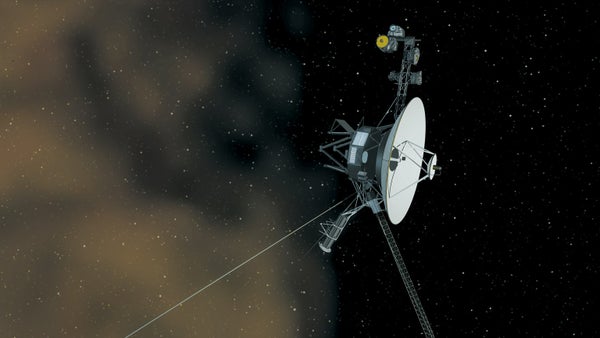
NASA/JPL-Caltech
I f the stars hadn't aligned, two of the most remarkable spacecraft ever launched never would have gotten off the ground. In this case, the stars were actually planets—the four largest in the solar system. Some 60 years ago they were slowly wheeling into an array that had last occurred during the presidency of Thomas Jefferson in the early years of the 19th century. For a while the rare planetary set piece unfolded largely unnoticed. The first person to call attention to it was an aeronautics doctoral student at the California Institute of Technology named Gary Flandro.
It was 1965, and the era of space exploration was barely underway—the Soviet Union had launched Sputnik 1, the first artificial satellite, only eight years earlier. Flandro, who was working part-time at NASA's Jet Propulsion Laboratory in Pasadena, Calif., had been tasked with finding the most efficient way to send a space probe to Jupiter or perhaps even out to Saturn, Uranus or Neptune. Using a favorite precision tool of 20th-century engineers—a pencil—he charted the orbital paths of those giant planets and discovered something intriguing: in the late 1970s and early 1980s, all four would be strung like pearls on a celestial necklace in a long arc with Earth.
This coincidence meant that a space vehicle could get a speed boost from the gravitational pull of each giant planet it passed, as if being tugged along by an invisible cord that snapped at the last second, flinging the probe on its way. Flandro calculated that the repeated gravity assists, as they are called, would cut the flight time between Earth and Neptune from 30 years to 12. There was just one catch: the alignment happened only once every 176 years. To reach the planets while the lineup lasted, a spacecraft would have to be launched by the mid-1970s.
On supporting science journalism
If you're enjoying this article, consider supporting our award-winning journalism by subscribing . By purchasing a subscription you are helping to ensure the future of impactful stories about the discoveries and ideas shaping our world today.
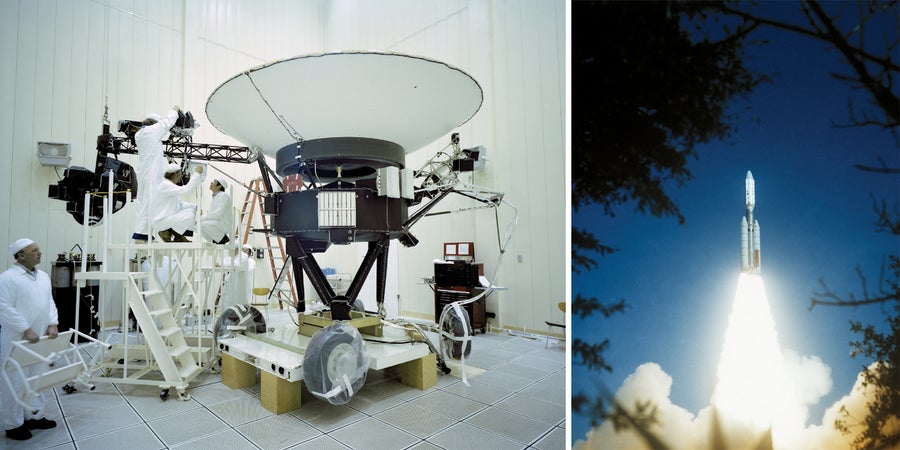
READY FOR LAUNCH: Voyager 2 undergoes testing at NASA’s Jet Propulsion Laboratory before its flight ( left ). The spacecraft lifted off on August 20, 1977. Credit: NASA/JPL-Caltech
As it turned out, NASA would build two space vehicles to take advantage of that once-in-more-than-a-lifetime opportunity. Voyager 1 and Voyager 2, identical in every detail, were launched within 15 days of each other in the summer of 1977. After nearly 45 years in space, they are still functioning, sending data back to Earth every day from beyond the solar system's most distant known planets. They have traveled farther and lasted longer than any other spacecraft in history. And they have crossed into interstellar space, according to our best understanding of the boundary between the sun's sphere of influence and the rest of the galaxy. They are the first human-made objects to do so, a distinction they will hold for at least another few decades. Not a bad record, all in all, considering that the Voyager missions were originally planned to last just four years.
Early in their travels, four decades ago, the Voyagers gave astonished researchers the first close-up views of the moons of Jupiter and Saturn, revealing the existence of active volcanoes and fissured ice fields on worlds astronomers had thought would be as inert and crater-pocked as our own moon. In 1986 Voyager 2 became the first spacecraft to fly past Uranus; three years later it passed Neptune. So far it is the only spacecraft to have made such journeys. Now, as pioneering interstellar probes more than 12 billion miles from Earth, they're simultaneously delighting and confounding theorists with a series of unexpected discoveries about that uncharted region.
Their remarkable odyssey is finally winding down. Over the past three years NASA has shut down heaters and other nonessential components, eking out the spacecrafts' remaining energy stores to extend their unprecedented journeys to about 2030. For the Voyagers' scientists, many of whom have worked on the mission since its inception, it is a bittersweet time. They are now confronting the end of a project that far exceeded all their expectations.*
“We're at 44 and a half years,” says Ralph McNutt, a physicist at the Johns Hopkins University Applied Physics Laboratory (APL), who has devoted much of his career to the Voyagers. “So we've done 10 times the warranty on the darn things.”
The stars may have been cooperating, but at first, Congress wasn't. After Flandro's report, NASA drew up plans for a so-called Grand Tour that would send as many as five probes to the four giant planets and Pluto. It was ambitious. It was expensive. Congress turned it down. “There was this really grand vision,” says Linda Spilker, a JPL planetary scientist who started working on the Voyager missions in 1977, a few months before their launch. “Because of cost, it was whittled back.”
Congress eventually approved a scaled-down version of the Grand Tour, initially called Mariner Jupiter-Saturn 1977, or MJS 77. Two spacecraft were to be sent to just two planets. Nevertheless, NASA's engineers went about designing, somewhat surreptitiously, vehicles capable of withstanding the rigors of a much longer mission. They hoped that once the twin probes proved themselves, their itinerary would be extended to Uranus, Neptune, and beyond.
“Four years—that was the prime mission,” says Suzanne Dodd, who, after a 20-year hiatus from the Voyager team, returned in 2010 as the project manager. “But if an engineer had a choice to put in a part that was 10 percent more expensive but wasn't something that was needed for a four-year mission, they just went ahead and did that. And they wouldn't necessarily tell management.” The fact that the scientists were able to build two spacecraft, and that both are still working, is even more remarkable, she adds.
In terms of both engineering and deep-space navigation, this was new territory. The motto “Failure is not an option” hadn't yet been coined, and at that time it would not have been apt. In the early 1960s NASA had attempted to send a series of spacecraft to the moon to survey future landing sites for crewed missions. After 12 failures, one such effort finally succeeded.
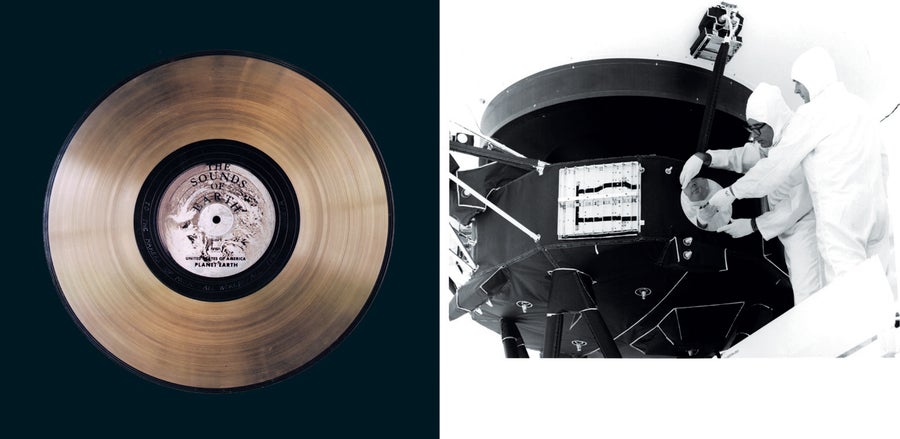
GOLDEN RECORD: Each Voyager carries a golden record ( left ) of sounds and images from Earth in case the spacecraft are intercepted by an extraterrestrial civilization. Engineers put the cap on Voyager 1’s record before its launch ( right ). Credit: NASA/JPL-Caltech
“In those days we always launched two spacecraft” because the failure rate was so high, said Donald Gurnett, only partly in jest. Gurnett, a physicist at the University of Iowa and one of the original scientists on the Voyager team, was a veteran of 40 other space missions. He spoke with me a few weeks before his death in January. (In an obituary, his daughter Christina said his only regret was that “he would not be around to see the next 10 years of data returning from Voyager.”)
When the Voyagers were being built, only one spacecraft had used a gravity assist to reach another planet—the Mariner 10 probe got one from Venus while en route to Mercury. But the Voyagers would be attempting multiple assists with margins of error measured in tens of minutes. Jupiter, their first stop, was about 10 times farther from Earth than Mercury. Moreover, the Voyagers would have to travel through the asteroid belt along the way. Before Voyager there had been a big debate about whether spacecraft could get through the asteroid belt “without being torn to pieces,” McNutt says. But in the early 1970s Pioneer 10 and 11 flew through it unscathed—the belt turned out to be mostly empty space—paving the way for Voyager, he says.
To handle all these challenges, the Voyagers, each about the size of an old Volkswagen Beetle, needed some onboard intelligence. So NASA's engineers equipped the vehicles' computers with 69 kilobytes of memory, less than a hundred thousandth the capacity of a typical smartphone. In fact, the smartphone comparison is not quite right. “The Voyager computers have less memory than the key fob that opens your car door,” Spilker says. All the data collected by the spacecraft instruments would be stored on eight-track tape recorders and then sent back to Earth by a 23-watt transmitter—about the power level of a refrigerator light bulb. To compensate for the weak transmitter, both Voyagers carry 12-foot-wide dish antennas to send and receive signals.
“It felt then like we were right on top of the technology,” says Alan Cummings, a physicist at Caltech and another Voyager OG. “I'll tell you, what was amazing is how quickly that whole thing happened.” Within four years the MJS 77 team had built three spacecraft, including one full-scale functioning test model. The spacecraft were rechristened Voyager 1 and 2 a few months before launch.
Although many scientists have worked on the Voyagers over the decades, Cummings can make a unique claim. “I was the last person to touch the spacecraft before they launched,” he says. Cummings was responsible for two detectors designed to measure the flux of electrons and other charged particles when the Voyagers encountered the giant planets. Particles would pass through a small “window” in each detector that consisted of aluminum foil just three microns thick. Cummings worried that technicians working on the spacecraft might have accidentally dented or poked holes in the windows. “So they needed to be inspected right before launch,” he says. “Indeed, I found that one of them was a little bit loose.”
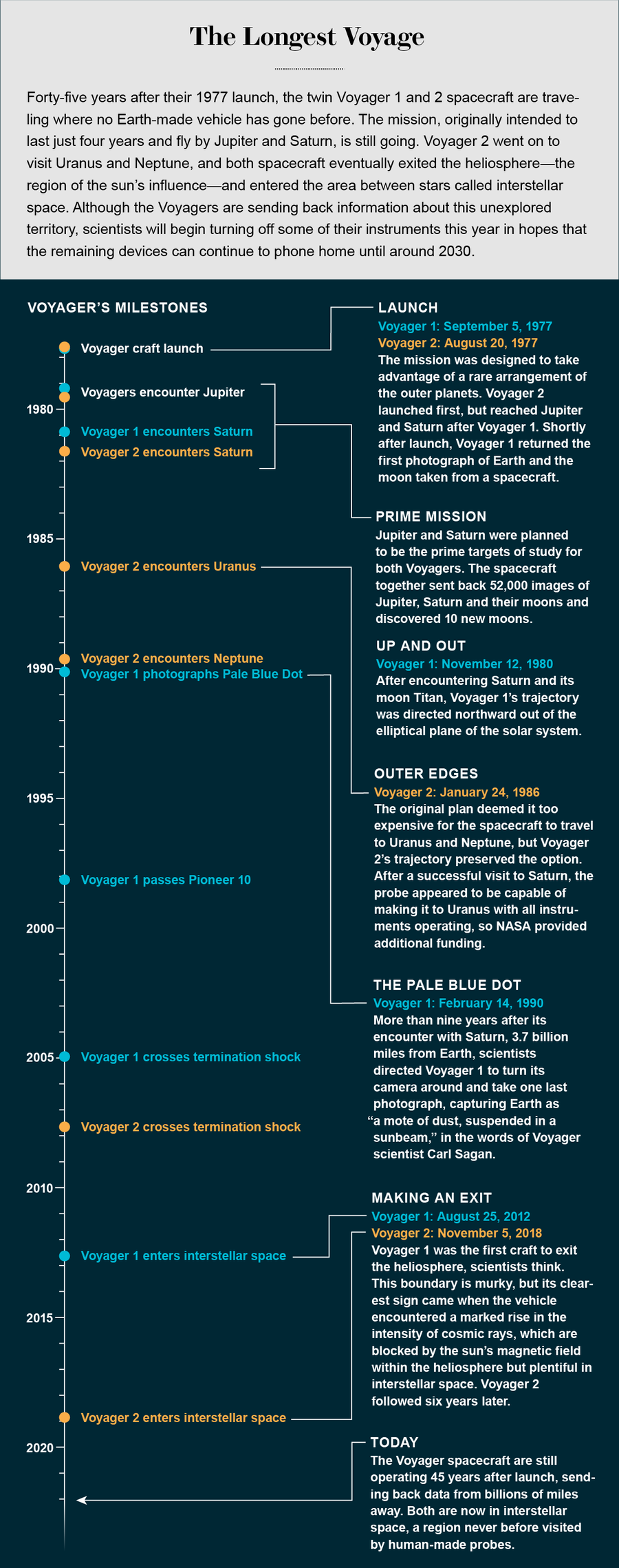
Credit: Graphic by Matthew Twombly and Juan Velasco (5W Infographic); Consultants: John Richardson (principal investigator, Voyager Plasma Science, Massachusetts Institute of Technology, Center for Space Research) and Merav Opher (professor, Department of Astronomy, Boston University)
Voyager 1 reached Jupiter in March 1979, 546 days after its launch. Voyager 2, following a different trajectory, arrived in July of that year. Both spacecraft were designed to be stable platforms for their vidicon cameras, which used red, green and blue filters to produce full-color images. They hardly spin at all as they speed through space—their rotational motion is more than 15 times slower than the crawl of a clock's hour hand, minimizing the risk of blurred images. Standing-room crowds at JPL watched as the spacecraft started transmitting the first pictures of Jupiter while still about three or four months away from the planet.
“In all of the main conference rooms and in the hallways, they had these TV monitors set up,” Spilker says. “So as the data came down line by line, each picture would appear on a monitor. The growing anticipation and the expectation of what we were going to see when we got up really, really close—that was tremendously exciting.”
Cummings vividly recalls the day he caught his first glimpse of Jupiter's third-largest moon, Io. “I was going over to a building on the Caltech campus where they were showing a livestream [of Voyager's images],” he says. “I walk in, and there's this big picture of Io, and it's all orange and black. I thought, okay, the Caltech students had pulled a prank, and it's a picture of a poorly made pizza.”
Io's colorful appearance was completely unexpected. Before the Voyagers proved otherwise, the assumption had been that all moons in the solar system would be more or less alike—drab and cratered. No one anticipated the wild diversity of moonscapes the Voyagers would discover around Jupiter and Saturn.
The first hint that there might be more kinds of moons in the heavens than astronomers had dreamed of came while the Voyagers were still about a million miles from Jupiter. One of their instruments—the Low-Energy Charged Particle [LECP] detector system—picked up some unusual signals. “We started seeing oxygen and sulfur ions hitting the detector,” says Stamatios Krimigis, who designed the LECP and is now emeritus head of the space department at Johns Hopkins APL. The density of oxygen and sulfur ions had shot up by three orders of magnitude compared with the levels measured up to that point. At first, his team thought the instrument had malfunctioned. “We scrutinized the data,” Krimigis says, “but there was nothing wrong.”
The Voyagers' cameras soon solved the mystery: Io had active volcanoes. The small world—it is slightly larger than Earth's moon—is now known to be the most volcanically active body in the solar system. “The only active volcanoes we knew of at the time were on Earth,” says Edward Stone, who has been the project scientist for the Voyager missions since 1972. “And here suddenly was a moon that had 10 times as much volcanic activity as Earth.” Io's colors—and the anomalous ions hitting Krimigis's detector—came from elements blasted from the moon's volcanoes. The largest of Io's volcanoes, known as Pele, has blown out plumes 30 times the height of Mount Everest; debris from Pele covers an area about the size of France.
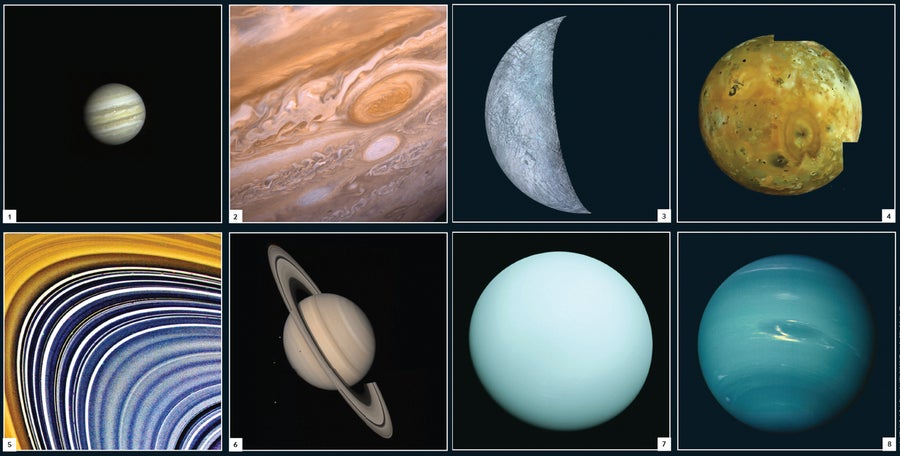
The twin spacecraft took a grand tour through the giant planets of the solar system, passing by Jupiter ( 1 , 2 ) and Saturn ( 5 , 6 ) and taking the first close-up views of those planets’ moons. Jupiter’s satellite Europa ( 3 ), for instance, turned out to be covered with ice, and its moon Io ( 4 ) was littered with volcanoes—discoveries that came as a surprise to scientists who had assumed the moons would be gray and crater-pocked like Earth’s. Voyager 2 went on to fly by Uranus ( 7 ) and Neptune ( 8 ), and it is still the only probe to have visited there. Credit: NASA/JPL ( 1 , 2 , 4 , 5 , 6 , 8 ); NASA/JPL/USGS (3); NASA/JPL-Caltech ( 7 )
Altogether, the Voyagers took more than 33,000 photographs of Jupiter and its satellites. It felt like every image brought a new discovery: Jupiter had rings; Europa, one of Jupiter's 53 named moons, was covered with a cracked icy crust now estimated to be more than 60 miles thick. As the spacecraft left the Jupiter system, they got a farewell kick of 35,700 miles per hour from a gravity assist. Without it they would not have been able to overcome the gravitational pull of the sun and reach interstellar space.
At Saturn, the Voyagers parted company. Voyager 1 hurtled through Saturn's rings (taking thousands of hits from dust grains), flew past Titan, a moon shrouded in orange smog, and then headed “north” out of the plane of the planets. Voyager 2 continued alone to Uranus and Neptune. In 1986 Voyager 2 found 10 new moons around Uranus and added the planet to the growing list of ringed worlds. Just four days after Voyager 2's closest approach to Uranus, however, its discoveries were overshadowed when the space shuttle Challenger exploded shortly after launch. All seven of Challenger 's crew members were killed, including Christa McAuliffe, a high school teacher from New Hampshire who would have been the first civilian to travel into space.
Three years later, passing about 2,980 miles above Neptune's azure methane atmosphere, Voyager 2 measured the highest wind speeds of any planet in the solar system: up to 1,000 mph. Neptune's largest moon, Triton, was found to be one of the coldest places in the solar system, with a surface temperature of −391 degrees Fahrenheit (−235 degrees Celsius). Ice volcanoes on the moon spewed nitrogen gas and powdery particles five miles into its atmosphere.
Voyager 2's images of Neptune and its moons would have been the last taken by either of the spacecraft had it not been for astronomer Carl Sagan, who was a member of the mission's imaging team. With the Grand Tour officially completed, NASA planned to turn off the cameras on both probes. Although the mission had been extended with the hope that the Voyagers would make it to interstellar space—it had been officially renamed the Voyager Interstellar Mission—there would be no photo ops after Neptune, only the endless void and impossibly distant stars.
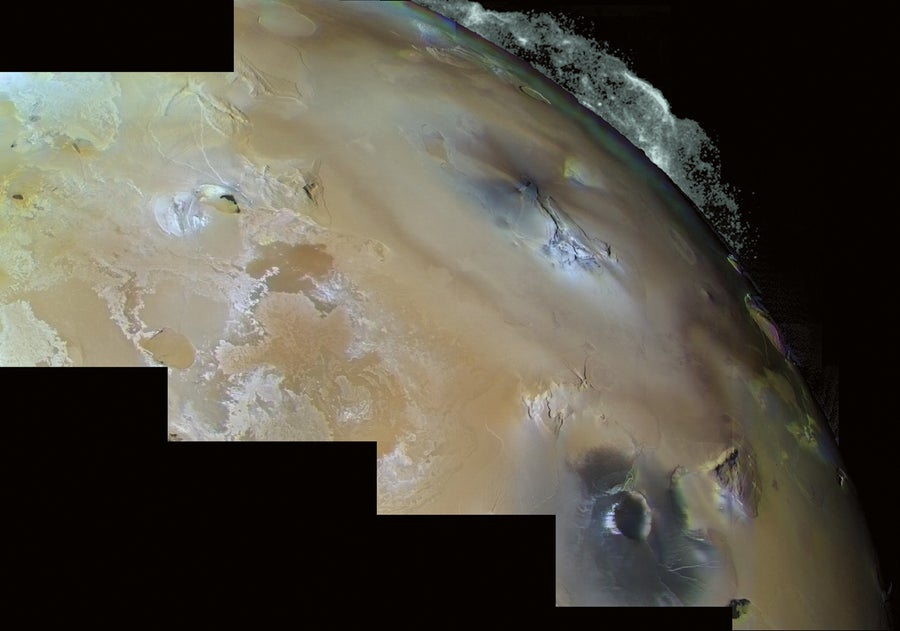
ERUPTION: The discovery of the volcano Pele, shown in this photograph from Voyager 1, confirmed that Jupiter’s moon hosts active volcanism. Credit: NASA/JPL/USGS
Sagan urged NASA officials to have Voyager 1 transmit one last series of images. So, on Valentine's Day in 1990, the probe aimed its cameras back toward the inner solar system and took 60 final shots. The most haunting of them all, made famous by Sagan as the “Pale Blue Dot,” captured Earth from a distance of 3.8 billion miles. It remains the most distant portrait of our planet ever taken. Veiled by wan sunlight that reflected off the camera's optics, Earth is barely visible in the image. It doesn't occupy even a full pixel.
Sagan, who died in 1996, “worked really hard to convince NASA that it was worth looking back at ourselves,” Spilker says, “and seeing just how tiny that pale blue dot was.”
Both Voyagers are now so far from Earth that a one-way radio signal traveling at the speed of light takes almost 22 hours to reach Voyager 1 and just over 18 to catch up with Voyager 2. Every day they move away by another three to four light-seconds. Their only link to Earth is NASA's Deep Space Network, a trio of tracking complexes spaced around the globe that enables uninterrupted communication with spacecraft as Earth rotates. As the Voyagers recede from us in space and time, their signals are becoming ever fainter. “Earth is a noisy place,” says Glen Nagle, outreach and communications manager at the Deep Space Network's facility in Canberra, Australia. “Radios, televisions, cell phones—everything makes noise. And so it gets harder and harder to hear these tiny whispers from the spacecraft.”
Faint as they are, those whispers have upended astronomers' expectations of what the Voyagers would find as they entered the interstellar phase of the mission. Stone and other Voyager scientists I spoke with cautioned me not to conflate the boundary of interstellar space with that of the solar system. The solar system includes the distant Oort cloud, a spherical collection of cometlike bodies bound by the sun's gravity that may stretch halfway to the closest star. The Voyagers won't reach its near edge for at least another 300 years. But interstellar space lies much closer at hand. It begins where a phenomenon called the solar wind ends.
Like all stars, the sun emits a constant flow of charged particles and magnetic fields—the solar wind. Moving at hypersonic speeds, the wind blows out from the sun like an inflating balloon, forming what astronomers call the heliosphere. As the solar wind billows into space, it pulls the sun's magnetic field along for the ride. Eventually pressure from interstellar matter checks the heliosphere's expansion, creating a boundary—preceded by an enormous shock front, the “termination shock”—with interstellar space. Before the Voyagers' journeys, estimates of the distance to that boundary with interstellar space, known as the heliopause, varied wildly.
“Frankly, some of them were just guesses,” according to Gurnett. One early guesstimate located the heliopause as close as Jupiter. Gurnett's own calculations, made in 1993, set the distance at anywhere from 116 to 177 astronomical units, or AU—about 25 times more distant. (One AU is the distance between Earth and the sun, equal to 93 million miles.) Those numbers, he says, were not very popular with his colleagues. By 1993 Voyager 1 already had 50 AU on its odometer. “If [the heliopause] was at 120 AU, that meant we had another 70 AU to go.” If Gurnett was right, the Voyagers, clipping along at about 3.5 AU a year, wouldn't exit the heliosphere for at least another two decades.
That prediction raised troubling questions: would the Voyagers—or the support of Congress—last that long? The mission's funding had been extended on the expectation that the spacecraft would cross the heliopause at about 50 AU. But the spacecraft left that milestone behind without finding any of the anticipated signs of interstellar transit. Astronomers had expected the Voyagers to detect a sudden surge in galactic cosmic rays—high-energy particles sprayed like shrapnel at nearly the speed of light from supernovae and other deep-space cataclysms. The vast magnetic cocoon formed by the heliosphere deflects most low-energy cosmic rays before they can reach the inner solar system. “[It] shields us from at least 75 percent of what's out there,” Stone says.
The Voyager ground team was also waiting for the spacecraft to register a shift in the prevailing magnetic field. The interstellar magnetic field, thought to be generated by nearby stars and vast clouds of ionized gases, would presumably have a different orientation from the magnetic field of the heliosphere. But the Voyagers had detected no such change.
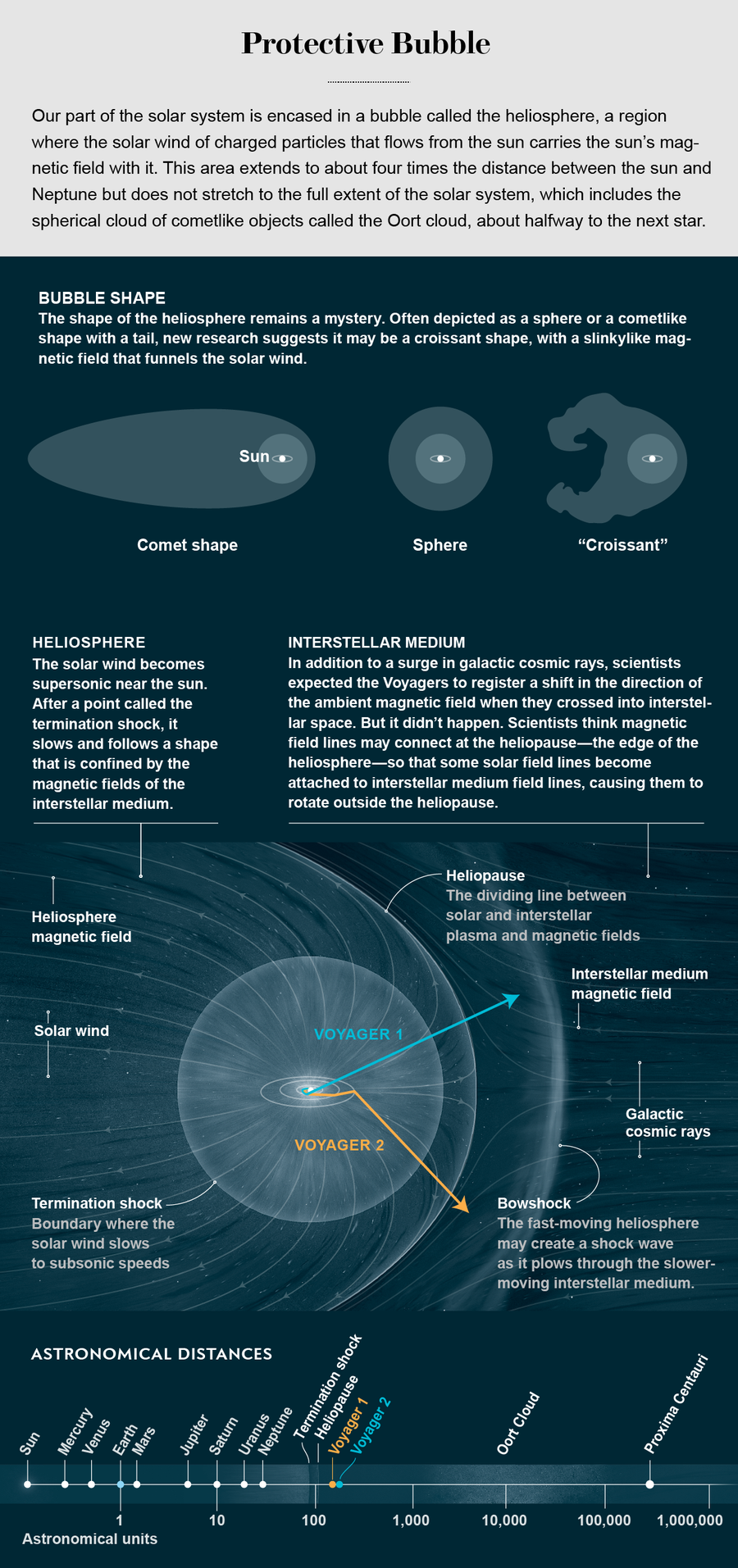
Gurnett's 1993 estimates were prescient. Almost 20 years passed before one of the Voyagers finally made it to the heliopause. During that time the mission narrowly survived threats to its funding, and the Voyager team shrank from hundreds of scientists and engineers to a few dozen close-knit lifers. Most of them remain on the job today. “When you have such a long-lived mission, you start to regard people like family,” Spilker says. “We had our kids around the same time. We'd take vacations together. We're spanning multiple generations now, and some of the younger people on Voyager were not even born [when the spacecraft] launched.”
The tenacity and commitment of that band of brothers and sisters were rewarded on August 25, 2012, when Voyager 1 finally crossed the heliopause. But some of the data it returned were baffling. “We delayed announcing that we had reached interstellar space because we couldn't come to an agreement on the fact,” Cummings says. “There was lots of debate for about a year.”
Although Voyager 1 had indeed found the expected jump in plasma density—its plasma-wave detector, an instrument designed by Gurnett, inferred an 80-fold increase—there was no sign of a change in the direction of the ambient magnetic field. If the vehicle had crossed from an area permeated by the sun's magnetic field to a region where the magnetic field derived from other stars, shouldn't that switch have been noticeable? “That was a shocker,” Cummings says. “And that still bothers me. But a lot of people are coming to grips with it.”
When Voyager 2 reached the interstellar shoreline in November 2018, it, too, failed to detect a magnetic field shift. And the spacecraft added yet another puzzle: it encountered the heliopause at 120 AU from Earth—the same distance marked by its twin six years earlier. That did not jibe with any theoretical models, all of which said the heliosphere should expand and contract in sync with the sun's 11-year cycle. During that period the solar wind ebbs and surges. Voyager 2 arrived when the solar wind was peaking, which, if the models were correct, should have pushed the heliopause farther out than 120 AU. “It was unexpected by all the theorists,” Krimigis says. “I think the modeling, in terms of the findings of the Voyagers, has been found wanting.”
Now that the Voyagers are giving theorists some real field data, their models of the interaction between the heliosphere and the interstellar environment are becoming more complex. “The sort of general picture is that [our sun] emerged from a hot, ionized region” and entered a spotty, partly ionized area in the galaxy, says Gary Zank, an astrophysicist at the University of Alabama in Huntsville. The hot region likely formed in the aftermath of a supernova—some nearby ancient star, or perhaps a few, exploded at the end of its life and heated up the space, stripping electrons off their atoms in the process. The boundary around that region can be thought of as “kind of like the seashore, with all the water and the waves swirling and mixed up. We're in that kind of turbulent region ... magnetic fields get twisted up, turned around. It's not like the smooth magnetic fields that theorists usually like to draw,” although the amount of turbulence seen can differ depending on the type of observation. The Voyagers' data show little field variation at large scales but many small-scale fluctuations around the heliopause, caused by the heliosphere's influence on the interstellar medium. At some point, it is thought, the spacecraft will leave those roiling shoals behind and at last encounter the unalloyed interstellar magnetic field.
Or maybe that picture is completely wrong. A few researchers believe that the Voyagers have not yet left the heliosphere. “There is no reason for the magnetic fields in the heliosphere and the interstellar medium to have exactly the same orientation,” says Len A. Fisk, a space plasma scientist at the University of Michigan and a former NASA administrator. For the past several years Fisk and George Gloeckler, a colleague at Michigan and a longtime Voyager mission scientist, have been working on a model of the heliosphere that pushes its edge out by another 40 AU.
Most people working in the field, however, have been convinced by the dramatic uptick in galactic cosmic rays and plasma density the Voyagers measured. “Given that,” Cummings says, “it's very difficult to argue that we're not really in interstellar space. But then again, it's not like everything fits. That's why we need an interstellar probe.”
McNutt has been pushing for such a mission for decades. He and his colleagues at Johns Hopkins recently completed a nearly 500-page report outlining plans for an interstellar probe that would launch in 2036 and potentially could reach the heliosphere within 15 years, shaving 20 years off Voyager 1's flight time. And unlike the Voyager missions, the interstellar probe would be designed specifically to study the outer edge of the heliosphere and its environs. Within the next two years the National Academies of Sciences, Engineering, and Medicine will decide whether the mission should be one of NASA's priorities for the next decade.
An interstellar probe could answer one of the most fundamental questions about the heliosphere. “If I'm looking from the outside, what the devil does this structure look like?” McNutt asks. “We really don't know. It's like trying to understand what a goldfish bowl looks like from the point of view of the goldfish. We [need to] be able to see the bowl from the outside.” In some models, as the heliosphere cruises along at 450,000 mph, interstellar matter flows smoothly past it, like water around the bow of a ship, resulting in an overall cometlike shape. One recent computer model, developed by astronomer Merav Opher and her colleagues at Boston University, predicts that more turbulent dynamics give the heliosphere a shape like a cosmic croissant.
“You can start multiple fights at any good science conference about that,” McNutt says, “but it's going to take getting out there and actually making some measurements to be able to see what's going on. It would be nice to know what the neighborhood looks like.”
Some things outlive their purpose—answering machines, VCRs, pennies. Not the Voyagers—they transcended theirs, using 50-year-old technology. “The amount of software on these instruments is slim to none,” Krimigis says. “There are no microprocessors—they didn't exist!” The Voyagers' designers could not rely on thousands of lines of code to help operate the spacecraft. “On the whole,” Krimigis says, “I think the mission lasted so long because almost everything was hardwired. Today's engineers don't know how to do this. I don't know if it's even possible to build such a simple spacecraft [now]. Voyager is the last of its kind.”
It won't be easy to say goodbye to these trailblazing vehicles. “It's hard to see it come to an end,” Cummings says. “But we did achieve something really amazing. It could have been that we never got to the heliopause, but we did.”
Voyager 2 now has five remaining functioning instruments, and Voyager 1 has four. All are powered by a device that converts heat from the radioactive decay of plutonium into electricity. But with the power output decreasing by about four watts a year, NASA has been forced into triage mode. Two years ago the mission's engineers turned off the heater for the cosmic-ray detector, which had been crucial in determining the heliopause transit. Everyone expected the instrument to die.
“The temperature dropped like 60 or 70 degrees C, well outside any tested operating limits,” Spilker says, “and the instrument kept working. It was incredible.”
The last two Voyager instruments to turn off will probably be a magnetometer and the plasma science instrument. They are contained in the body of the spacecraft, where they are warmed by heat emitted from computers. The other instruments are suspended on a 43-foot-long fiberglass boom. “And so when you turn the heaters off,” Dodd says, “those instruments get very, very cold.”
How much longer might the Voyagers last? “If everything goes really well, maybe we can get the missions extended into the 2030s,” Spilker says. “It just depends on the power. That's the limiting point.”

TINY SPECK: Among Voyager 1’s last photographs was this shot of Earth seen from 3.8 billion miles away, dubbed the “Pale Blue Dot” by Voyager scientist Carl Sagan. Credit: NASA/JPL-Caltech
Even after the Voyagers are completely muted, their journeys will continue. In another 16,700 years, Voyager 1 will pass our nearest neighboring star, Proxima Centauri, followed 3,600 years later by Voyager 2. Then they will continue to circle the galaxy for millions of years. They will still be out there, more or less intact, eons after our sun has collapsed and the heliosphere is no more, not to mention one Pale Blue Dot. At some point in their travels, they may manage to convey a final message. It won't be transmitted by radio, and if it's received, the recipients won't be human.
The message is carried on another kind of vintage technology: two records. Not your standard plastic version, though. These are made of copper, coated with gold and sealed in an aluminum cover. Encoded in the grooves of the Golden Records , as they are called, are images and sounds meant to give some sense of the world the Voyagers came from. There are pictures of children, dolphins, dancers and sunsets; the sounds of crickets, falling rain and a mother kissing her child; and 90 minutes of music, including Bach's Brandenburg Concerto No. 2 and Chuck Berry's “Johnny B. Goode.”
And there is a message from Jimmy Carter, who was the U.S. president when the Voyagers were launched. “We cast this message into the cosmos,” it reads in part. “We hope someday, having solved the problems we face, to join a community of galactic civilizations. This record represents our hope and our determination, and our good will in a vast and awesome universe.”
*Editor’ Note (6/22/22): This paragraph was edited after posting to correct the description of when NASA began shutting down nonessential components of the Voyager spacecraft.
Tim Folger is a freelance journalist who writes for National Geographic , Discover , and other national publications.
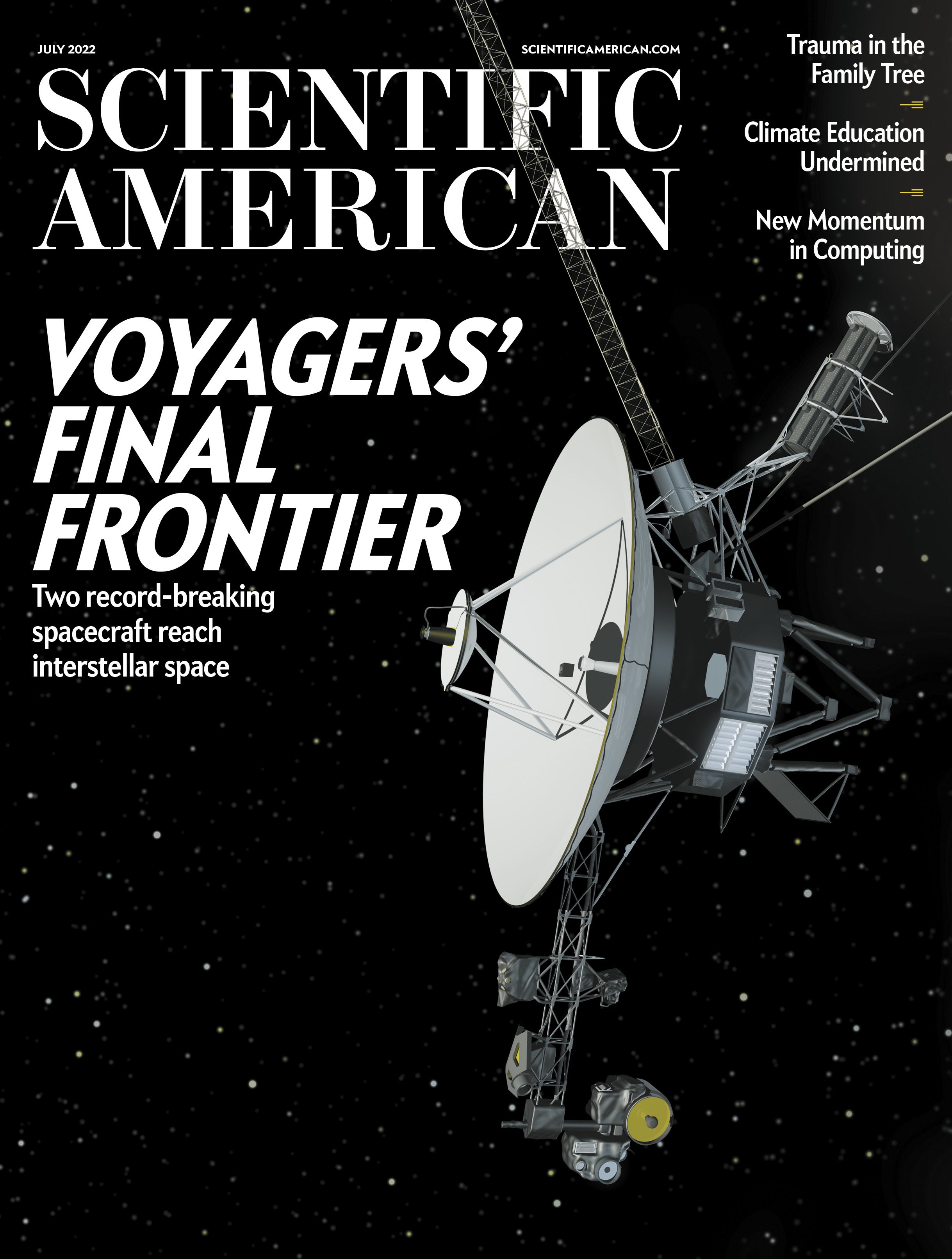
NASA’s Voyager Will Do More Science With New Power Strategy
Editor’s note: Language was added in the second paragraph on May 1 to underscore that the mission will continue even after a science instrument is retired.
The plan will keep Voyager 2’s science instruments turned on a few years longer than previously anticipated, enabling yet more revelations from interstellar space.

The Voyager proof test model, shown in a space simulator chamber at JPL in 1976, was a replica of the twin Voyager space probes that launched in 1977. The model’s scan platform stretches to the right, holding several of the spacecraft’s science instruments in their deployed positions.
Launched in 1977, the Voyager 2 spacecraft is more than 12 billion miles (20 billion kilometers) from Earth, using five science instruments to study interstellar space. To help keep those instruments operating despite a diminishing power supply, the aging spacecraft has begun using a small reservoir of backup power set aside as part of an onboard safety mechanism. The move will enable the mission to postpone shutting down a science instrument until 2026, rather than this year.
Switching off a science instrument will not end the mission. After shutting off the one instrument in 2026, the probe will continue to operate four science instruments until the declining power supply requires another to be turned off. If Voyager 2 remains healthy, the engineering team anticipates the mission could potentially continue for years to come.
Voyager 2 and its twin Voyager 1 are the only spacecraft ever to operate outside the heliosphere, the protective bubble of particles and magnetic fields generated by the Sun. The probes are helping scientists answer questions about the shape of the heliosphere and its role in protecting Earth from the energetic particles and other radiation found in the interstellar environment.
“The science data that the Voyagers are returning gets more valuable the farther away from the Sun they go, so we are definitely interested in keeping as many science instruments operating as long as possible,” said Linda Spilker, Voyager’s project scientist at NASA’s Jet Propulsion Laboratory in Southern California, which manages the mission for NASA.
Power to the Probes
Both Voyager probes power themselves with radioisotope thermoelectric generators (RTGs), which convert heat from decaying plutonium into electricity. The continual decay process means the generator produces slightly less power each year. So far, the declining power supply hasn’t impacted the mission’s science output, but to compensate for the loss, engineers have turned off heaters and other systems that are not essential to keeping the spacecraft flying.

Each of NASA’s Voyager probes are equipped with three radioisotope thermoelectric generators (RTGs), including the one shown here. The RTGs provide power for the spacecraft by converting the heat generated by the decay of plutonium-238 into electricity.
With those options now exhausted on Voyager 2, one of the spacecraft’s five science instruments was next on their list. (Voyager 1 is operating one less science instrument than its twin because an instrument failed early in the mission. As a result, the decision about whether to turn off an instrument on Voyager 1 won’t come until sometime next year.)
In search of a way to avoid shutting down a Voyager 2 science instrument, the team took a closer look at a safety mechanism designed to protect the instruments in case the spacecraft’s voltage – the flow of electricity – changes significantly. Because a fluctuation in voltage could damage the instruments, Voyager is equipped with a voltage regulator that triggers a backup circuit in such an event. The circuit can access a small amount of power from the RTG that’s set aside for this purpose. Instead of reserving that power, the mission will now be using it to keep the science instruments operating.
Although the spacecraft’s voltage will not be tightly regulated as a result, even after more than 45 years in flight, the electrical systems on both probes remain relatively stable, minimizing the need for a safety net. The engineering team is also able to monitor the voltage and respond if it fluctuates too much. If the new approach works well for Voyager 2, the team may implement it on Voyager 1 as well.
Get the Latest JPL News
“Variable voltages pose a risk to the instruments, but we’ve determined that it’s a small risk, and the alternative offers a big reward of being able to keep the science instruments turned on longer,” said Suzanne Dodd, Voyager’s project manager at JPL. “We’ve been monitoring the spacecraft for a few weeks, and it seems like this new approach is working.”
The Voyager mission was originally scheduled to last only four years, sending both probes past Saturn and Jupiter. NASA extended the mission so that Voyager 2 could visit Neptune and Uranus; it is still the only spacecraft ever to have encountered the ice giants. In 1990, NASA extended the mission again, this time with the goal of sending the probes outside the heliosphere. Voyager 1 reached the boundary in 2012, while Voyager 2 (traveling slower and in a different direction than its twin) reached it in 2018.
More About the Mission
A division of Caltech in Pasadena, JPL built and operates the Voyager spacecraft. The Voyager missions are a part of the NASA Heliophysics System Observatory, sponsored by the Heliophysics Division of the Science Mission Directorate in Washington.
For more information about the Voyager spacecraft, visit:
https://www.nasa.gov/voyager
News Media Contact
Calla Cofield
Jet Propulsion Laboratory, Pasadena, Calif.
626-808-2469
- Bishop Airlock
- Satellite Launch Services
- Astronaut Health & Medicine
- Mission Management, Ops, & Integration
- Advanced Systems
- Research & Tech Payloads
- Technical Resources
- In Space Servicing & Assembly
- Satellite and Spacecraft Subsystems
- Electro-Optics, Guidance & Navigation
- Digital Systems
- Signals Intelligence
- TALIX: Tactical Precision
- Ground Launch Support
© Copyright. All rights reserved.
Legal & Privacy Notices
Mitsubishi Corporation Joins Starlab Space as Strategic Partner, Equity Owner in Joint Venture
HOUSTON , April 4, 2024 /PRNewswire/ — Starlab Space LLC (Starlab Space), the joint venture between Voyager Space and Airbus, today welcomed Mitsubishi Corporation as a strategic partner and equity owner in Starlab Space. This partnership expands Starlab Space’s reach beyond a transatlantic partnership and transforms the joint venture into a global organization.
Mitsubishi Corporation, renowned for its innovative endeavors across diverse industries, brings extensive expertise and resources to this global partnership. Mitsubishi Corporation is expected to leverage its capabilities to significantly increase the value of Starlab, using space research to enhance and accelerate terrestrial product development in multiple industries and expand access to space-based technologies globally.
“We are excited to join forces with Starlab, a best-in-class team comprising Airbus and Voyager, to drive innovation and catalyze advancements in space exploration,” said Mikito Nakaniwa, Division COO, Infrastructure, Ship & Aerospace Division of Mitsubishi Corporation. “Together, Mitsubishi Corporation and Starlab aim to open the commercial Low Earth Orbit (LEO) marketplace and create lasting value for global companies and industries.”
Additionally, this partnership is expected to expand access for the Japanese space economy and industrial base into the LEO marketplace by harnessing Starlab’s cutting-edge technologies and capabilities.
“It’s an honor to welcome Mitsubishi Corporation as a partner in our joint venture,” said Dylan Taylor , Chairman and CEO at Voyager Space. “Mitsubishi Corporation’s customer-centric focus and commitment to innovation aligns perfectly with our vision for Starlab. Together, we’ll unlock space technology on a global scale and drive meaningful impact across several industries, from space to ground.”
“We are very pleased to welcome Mitsubishi Corporation as a strategic partner in our joint venture with Voyager Space. This brings Starlab Space to the next level on the way to a truly global endeavor,” said Mike Schoellhorn , CEO of Airbus Defence and Space. “Our next-generation space station relies on both innovation and experience. Hence Mitsubishi Corporation, a pioneer of space business in Japan since the 1960s with a strong drive for shaping the future, is a perfect addition to our team.”
With state-of-the-art research facilities and a global presence, Starlab Space is well-positioned to support advanced space research and serve end-use customers on a global scale. This partnership underscores Starlab Space’s dedication to innovation not only in technology but also in operating a space station as a business in LEO, setting the standard for success in this new market.
About Starlab Space
Starlab Space LLC is a global joint venture between Voyager Space, Airbus, and Mitsubishi Corporation that is designing, building, and will operate the Starlab commercial space station. Starlab will serve a global customer base of space agencies, researchers, and companies, ensuring a continued human presence in low-Earth orbit and a seamless transition of microgravity science and research from the International Space Station into the new commercial space station era.
For more information on Starlab, visit the Starlab website at www.starlab-space.com and follow us on social media at @Starlab_Space ( X , Instagram ) and @Starlab ( Linkedin ).
SOURCE Starlab

Suggested Searches
- Climate Change
- Expedition 64
- Mars perseverance
- SpaceX Crew-2
- International Space Station
- View All Topics A-Z
Humans in Space
Earth & climate, the solar system, the universe, aeronautics, learning resources, news & events.

Join NASA in Celebrating Earth Day 2024 by Sharing a #GlobalSelfie

NASA Selects New Aircraft-Driven Studies of Earth and Climate Change

The Ocean Touches Everything: Celebrate Earth Day with NASA
- Search All NASA Missions
- A to Z List of Missions
- Upcoming Launches and Landings
- Spaceships and Rockets
- Communicating with Missions
- James Webb Space Telescope
- Hubble Space Telescope
- Why Go to Space
- Astronauts Home
- Commercial Space
- Destinations
- Living in Space
- Explore Earth Science
- Earth, Our Planet
- Earth Science in Action
- Earth Multimedia
- Earth Science Researchers
- Pluto & Dwarf Planets
- Asteroids, Comets & Meteors
- The Kuiper Belt
- The Oort Cloud
- Skywatching
- The Search for Life in the Universe
- Black Holes
- The Big Bang
- Dark Energy & Dark Matter
- Earth Science
- Planetary Science
- Astrophysics & Space Science
- The Sun & Heliophysics
- Biological & Physical Sciences
- Lunar Science
- Citizen Science
- Astromaterials
- Aeronautics Research
- Human Space Travel Research
- Science in the Air
- NASA Aircraft
- Flight Innovation
- Supersonic Flight
- Air Traffic Solutions
- Green Aviation Tech
- Drones & You
- Technology Transfer & Spinoffs
- Space Travel Technology
- Technology Living in Space
- Manufacturing and Materials
- Science Instruments
- For Kids and Students
- For Educators
- For Colleges and Universities
- For Professionals
- Science for Everyone
- Requests for Exhibits, Artifacts, or Speakers
- STEM Engagement at NASA
- NASA's Impacts
- Centers and Facilities
- Directorates
- Organizations
- People of NASA
- Internships
- Our History
- Doing Business with NASA
- Get Involved
- Aeronáutica
- Ciencias Terrestres
- Sistema Solar
- All NASA News
- Video Series on NASA+
- Newsletters
- Social Media
- Media Resources
- Upcoming Launches & Landings
- Virtual Events
- Sounds and Ringtones
- Interactives
- STEM Multimedia

Work Underway on Large Cargo Landers for NASA’s Artemis Moon Missions

Mars Science Laboratory: Curiosity Rover

NASA Open Science Initiative Expands OpenET Across Amazon Basin

NASA Motion Sickness Study Volunteers Needed!

Students Celebrate Rockets, Environment at NASA’s Kennedy Space Center

AI for Earth: How NASA’s Artificial Intelligence and Open Science Efforts Combat Climate Change


Sols 4159-4160: A Fully Loaded First Sol

NASA’s Juno Gives Aerial Views of Mountain, Lava Lake on Io

Hubble Captures a Bright Galactic and Stellar Duo

NASA’s TESS Returns to Science Operations

Astronauts To Patch Up NASA’s NICER Telescope

Hubble Goes Hunting for Small Main Belt Asteroids

NASA’s Near Space Network Enables PACE Climate Mission to ‘Phone Home’

NASA Photographer Honored for Thrilling Inverted In-Flight Image

NASA Langley Team to Study Weather During Eclipse Using Uncrewed Vehicles

ARMD Solicitations

Amendment 10: B.9 Heliophysics Low-Cost Access to Space Final Text and Proposal Due Date.

Tech Today: Taking Earth’s Pulse with NASA Satellites
Earth Day 2024: Posters and Virtual Backgrounds

NASA Names Finalists of the Power to Explore Challenge

Diez maneras en que los estudiantes pueden prepararse para ser astronautas

Astronauta de la NASA Marcos Berríos

Resultados científicos revolucionarios en la estación espacial de 2023
To view this video please enable JavaScript, and consider upgrading to a web browser that supports HTML5 video
The Von Kármán Lecture Series: Voyager: 45 Years in Space
As the twin Voyager spacecraft approach their 45th anniversary, we take a look at where the mission has been, what they’ve taught us, and where they go from here. In […]
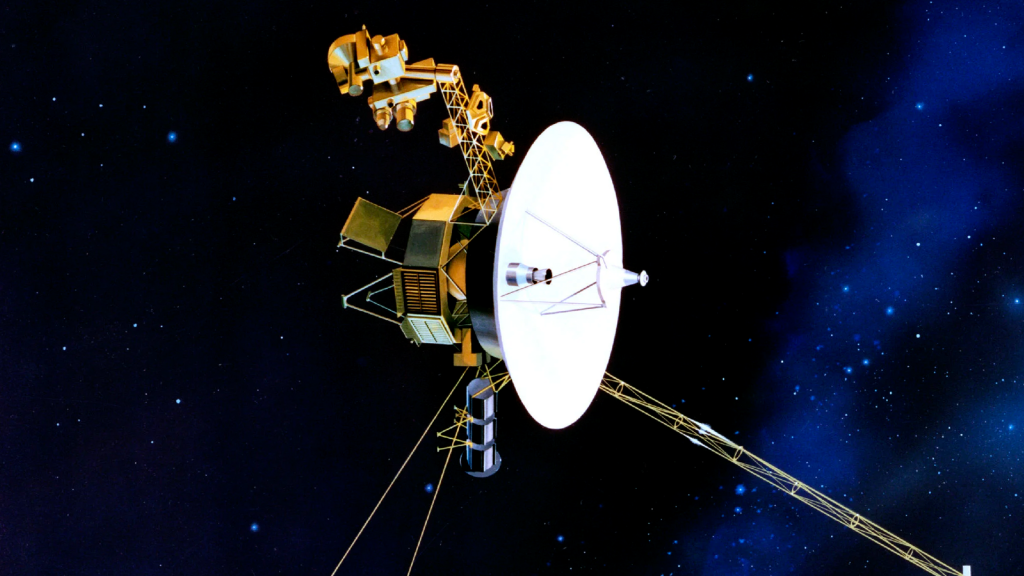
- Open Video Player
- WhatsApp https://plus.nasa.gov/video/voyager-45-years-in-space/ Copy URL to clipboard> Share
As the twin Voyager spacecraft approach their 45th anniversary, we take a look at where the mission has been, what they’ve taught us, and where they go from here. In this conversation with Suzanne Dodd, Voyager Project Manager, we’ll discuss how Voyager came to be, highlight some of the major discoveries, and hear stories about this mission that has captured the public’s attention for years.
The Von Kármán Lecture Series: How Do Missions Get Formed?
The von kármán lecture series: boldly go where no robots have gone before, the von kármán lecture series: surface mineral dust source investigation (emit) mission, the von kármán lecture series: how we find, name, and investigate exoplanets.
- Page Last Updated: Apr 20, 2024
- Responsible NASA Official: Rebecca Sirmons
- Cast & crew
- User reviews
- Episode aired Sep 25, 1996

Voyager is attacked by swarms of tiny spaceships which attach themselves to Voyager's hull. The Doctor is losing his memory and Torres activates the Jupiter Station diagnostic program run by... Read all Voyager is attacked by swarms of tiny spaceships which attach themselves to Voyager's hull. The Doctor is losing his memory and Torres activates the Jupiter Station diagnostic program run by a familiar hologram. Voyager is attacked by swarms of tiny spaceships which attach themselves to Voyager's hull. The Doctor is losing his memory and Torres activates the Jupiter Station diagnostic program run by a familiar hologram.
- Alexander Singer
- Gene Roddenberry
- Rick Berman
- Michael Piller
- Kate Mulgrew
- Robert Beltran
- Roxann Dawson
- 10 User reviews
- 6 Critic reviews

- Capt. Kathryn Janeway

- Cmdr. Chakotay

- Lt. B'Elanna Torres
- (as Roxann Biggs-Dawson)

- Lt. Tom Paris

- Ensign Harry Kim

- Giuseppina Pentangeli

- Holographic Bar Patron
- (uncredited)

- Swarm Alien
- Crewman Foster
- Lt. Susan Nicoletti

- Kashimuro Nozawa
- All cast & crew
- Production, box office & more at IMDbPro
Did you know
- Trivia Made obvious in several scenes in this episode (and Virtuoso (2000) , for that matter), Robert Picardo , the Doctor, is an accomplished singer. While he was at Yale University, he was a member of the Society of Orpheus and Bacchus, the second longest running undergraduate a Capella group in the United States. Then in 1977, he made his Broadway debut. He appeared in Gemini (1977) and Tribute (1980) .
- Goofs When getting ready for Paris' surgery, The Doctor states that he is sterilizing his hands, which makes little sense: he is a hologram that could just change his density to nothing, remove any germs on his surface, and then reinstate his solidness. Furthermore, after the sterilization is complete, he touches the control pads on different pieces of equipment, which have been touched in the past by other people who were not sterilized and would nullify the effort of sterilizing his hands.
[Captain Janeway is about to enter a restricted part of space]
Tuvok : Would it affect your decision if I pointed out that encroaching on the territory of an alien species is prohibited by Starfleet regulations?
Captain Kathryn Janeway : No, it wouldn't.
Tuvok : Captain - you have managed to surprise me.
Captain Kathryn Janeway : We're a long way from Starfleet, Lieutenant. I'm not about to waste fifteen months because we've run into a bunch of bullies.
- Connections Featured in Half in the Bag: Star Trek Beyond (2016)
- Soundtracks Star Trek: Voyager - Main Title (uncredited) Written by Jerry Goldsmith Performed by Jay Chattaway
User reviews 10
- Nov 30, 2022
- September 25, 1996 (United States)
- United States
- Official site
- Paramount Studios - 5555 Melrose Avenue, Hollywood, Los Angeles, California, USA (Studio)
- Paramount Television
- See more company credits at IMDbPro
Technical specs
- Runtime 45 minutes
- Dolby Digital
Related news
Contribute to this page.
- IMDb Answers: Help fill gaps in our data
- Learn more about contributing
More to explore

Recently viewed
We finally know why NASA's Voyager 1 spacecraft stopped communicating — scientists are working on a fix
The first spacecraft to explore beyond the solar system started spouting gibberish late last year. Now, NASA knows why.

NASA engineers have discovered the cause of a communications breakdown between Earth and the interstellar explorer Voyager 1. It would appear that a small portion of corrupted memory exists in one of the spacecraft's computers.
The glitch caused Voyager 1 to send unreadable data back to Earth, and is found in the NASA spacecraft's flight data subsystem (FDS). That's the system responsible for packaging the probe's science and engineering data before the telemetry modulation unit (TMU) and radio transmitter send it back to mission control.
The source of the issue began to reveal itself when Voyager 1 operators sent the spacecraft a "poke" on March 3, 2024. This was intended to prompt FDS to send a full memory readout back to Earth.
The readout confirmed to the NASA team that about 3% of the FDS memory had been corrupted, and that this was preventing the computer from carrying out its normal operations.
Related: NASA finds clue while solving Voyager 1's communication breakdown case
Launched in 1977, Voyager 1 became the first human-made object to leave the solar system and enter interstellar space in 2012. Voyager 2 followed its spacecraft sibling out of the solar system in 2018, and is still operational and communicating well with Earth.
After 11 years of interstellar exploration, in Nov. 2023, Voyager 1's binary code — the computer language it uses to communicate with Earth — stopped making sense. Its 0's and 1's didn't mean anything anymore.
Get the Space.com Newsletter
Breaking space news, the latest updates on rocket launches, skywatching events and more!
"Effectively, the call between the spacecraft and the Earth was still connected, but Voyager's 'voice' was replaced with a monotonous dial tone," Voyager 1's engineering team previously told Space.com .

The team strongly suspects this glitch is the result of a single chip that's responsible for storing part of the affected portion of the FDS memory ceasing to work.
Currently, however, NASA can’t say for sure what exactly caused that particular issue. The chip could have been struck by a high-speed energetic particle from space or, after 46 years serving Voyager 1, it may simply have worn out.
— Voyager 2: An iconic spacecraft that's still exploring 45 years on
— NASA's interstellar Voyager probes get software updates beamed from 12 billion miles away
— NASA Voyager 2 spacecraft extends its interstellar science mission for 3 more years
Voyager 1 currently sits around 15 billion miles (24 billion kilometers) from Earth, which means it takes 22.5 hours to receive a radio signal from it — and another 22.5 hours for the spacecraft to receive a response via the Deep Space Network's antennas. Solving this communication issue is thus no mean feat.
Yet, NASA scientists and engineers are optimistic they can find a way to help FDS operate normally, even without the unusable memory hardware.
Solving this issue could take weeks or even months, according to NASA — but if it is resolved, Voyager 1 should be able to resume returning science data about what lies outside the solar system.
Join our Space Forums to keep talking space on the latest missions, night sky and more! And if you have a news tip, correction or comment, let us know at: [email protected].

Robert Lea is a science journalist in the U.K. whose articles have been published in Physics World, New Scientist, Astronomy Magazine, All About Space, Newsweek and ZME Science. He also writes about science communication for Elsevier and the European Journal of Physics. Rob holds a bachelor of science degree in physics and astronomy from the U.K.’s Open University. Follow him on Twitter @sciencef1rst.
China rolls out rocket for next astronaut mission to Tiangong space station (photos)
SpaceX launches Starlink satellites on company's 40th mission of 2024 (video)
The Lyrid meteor shower peaks this weekend, but don't expect much this year
- jcs Funny timing for this article, when I am streaming an old Star Trek movie. So, surely this didn't cause a 3 byte glitch removing the O, Y and A from Voyager's name buffer? Get it? Reply
- bwana4swahili It is quite amazing it has lasted this long in a space environment. Reply
bwana4swahili said: It is quite amazing it has lasted this long in a space environment.
- HankySpanky So now we know even better for next time. Perhaps a spare chipset that is not redundant but is ready to take over, stored in a protective environment. A task NASA can handle. We'll find out in 100 year or so - if humanity still exists. Reply
HankySpanky said: So now we know even better for next time. Perhaps a spare chipset that is not redundant but is ready to take over, stored in a protective environment. A task NASA can handle. We'll find out in 100 year or so - if humanity still exists.
- Classical Motion I'm afraid it might self repair. And download galactic knowledge, then decide we are a danger. And turn around. Reply
Classical Motion said: I'm afraid it might self repair. And download galactic knowledge, then decide we are a danger. And turn around.
- jcs ROFLOL! And a hot bald chick delivering the bad news! Reply
- View All 8 Comments
Most Popular
- 2 Rocket Lab gearing up to refly Electron booster for 1st time
- 3 'Transformers One' 1st trailer unveils Optimus Prime and Megatron's shared history (video)
- 4 China rolls out rocket for next astronaut mission to Tiangong space station (photos)
- 5 SpaceX launches Starlink satellites on company's 40th mission of 2024 (video)

All Mars Resources

Perseverance’s ‘Bunsen Peak’ Sample
NASA’s Perseverance Mars rover captured this image of a sample cored from a rock called “Bunsen Peak” on March 11,…
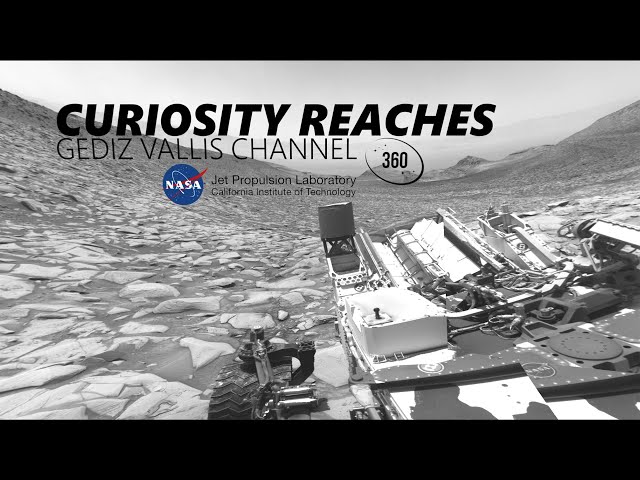
NASA’s Curiosity Rover Reaches Gediz Vallis Channel (360 View)
360-degree panorama provided by NASA’s Curiosity Mars rover. This view was captured at Gediz Vallis channel, a feature that formed…
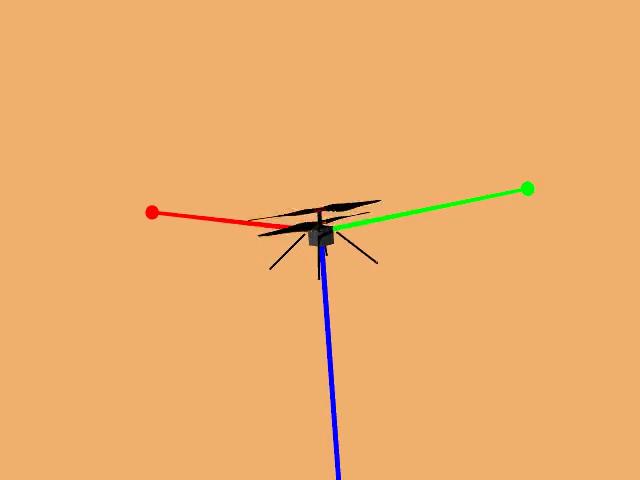
Animation of Mars Helicopter Flight Test
This animation shows a simulation of the response of NASA’s Ingenuity Mars Helicopter to the system identification, or “Sys-ID,” process.…

Rover, Helicopter Locations in Jezero Crater
This map shows the locations of NASA’ Perseverance rover (white star) and Ingenuity Mars Helicopter (cyan star) on Dec. 19,…

Sol 4132: Right Navigation Camera, Cylindrical Projection
NASA’s Mars rover Curiosity took 31 images in Gale Crater using its mast-mounted Right Navigation Camera (Navcam) to create this…

Sol 4130: Right Navigation Camera, Cylindrical Projection
NASA's Mars rover Curiosity took 31 images in Gale Crater using its mast-mounted Right Navigation Camera (Navcam) to create this…
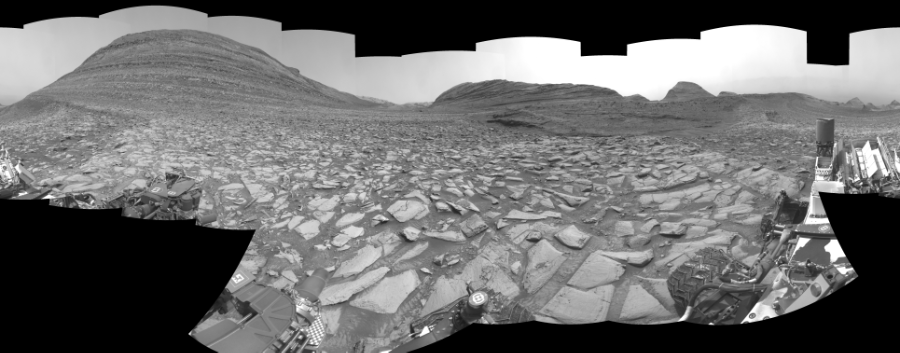
Sol 4128: Right Navigation Camera, Cylindrical Perspective
NASA's Mars rover Curiosity took 30 images in Gale Crater using its mast-mounted Right Navigation Camera (Navcam) to create this…
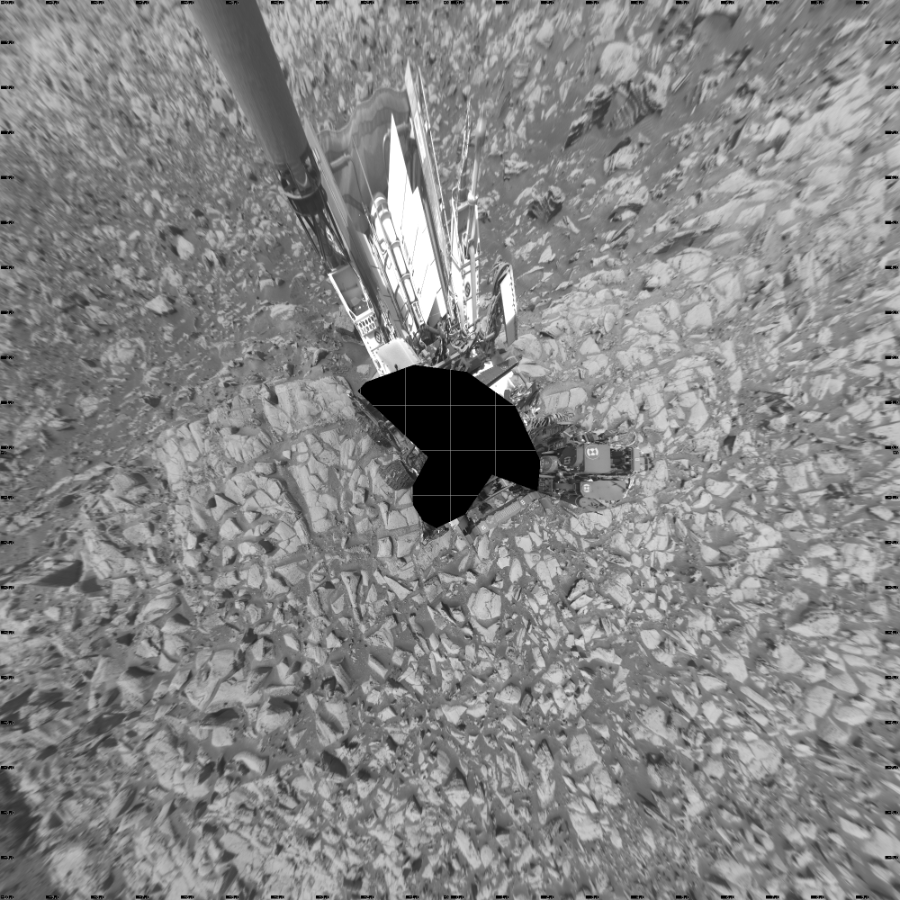
Sol 4128: Left Navigation Camera, Vertical Projection
NASA's Mars rover Curiosity took 30 images in Gale Crater using its mast-mounted Left Navigation Camera (Navcam) to create this…
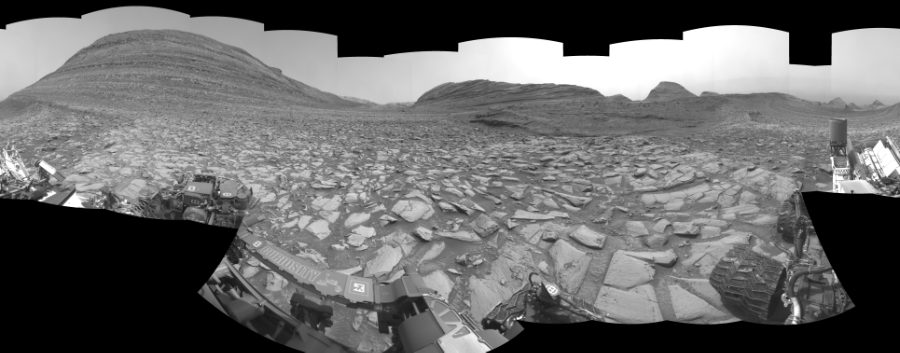
Sol 4128: Left Navigation Camera, Cylindrical Perspective

Sol 4128: Left Navigation Camera, Cylindrical Projection
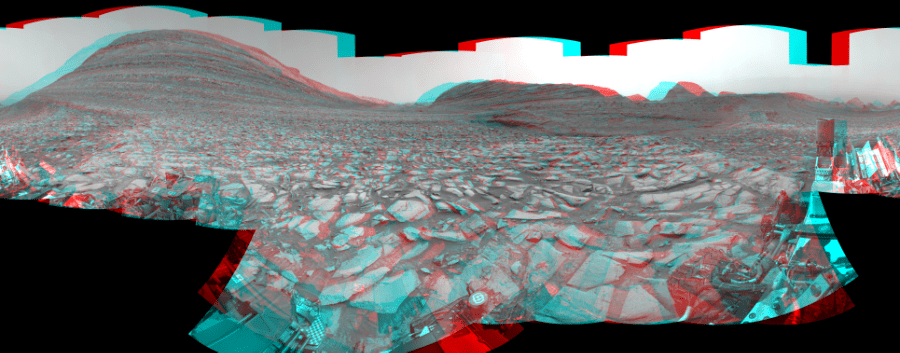
Sol 4128: Mast-Mounted Navigation Camera, Cylindrical Perspective
NASA's Mars rover Curiosity took 30 image pairs in Gale Crater using its mast-mounted Navigation Camera (Navcam) to create this…

Sol 4128: Right Navigation Camera, Cylindrical Projection

Sol 4125: Right Navigation Camera, Cylindrical Projection
NASA's Mars rover Curiosity took 52 images in Gale Crater using its mast-mounted Right Navigation Camera (Navcam) to create this…

Sol 4123: Right Navigation Camera, Cylindrical Projection
NASA's Mars rover Curiosity took 51 images in Gale Crater using its mast-mounted Right Navigation Camera (Navcam) to create this…

Sol 4118: Right Navigation Camera, Cylindrical Projection
NASA's Mars rover Curiosity took 49 images in Gale Crater using its mast-mounted Right Navigation Camera (Navcam) to create this…

IMAGES
VIDEO
COMMENTS
We deliver a broad range of novel, non-invasive, and versatile instrumentation and hardware tailored for space mission-unique requirements. the Future. We are Voyager Space, a leading space company dedicated to bettering humanity's future through bold exploration, cutting-edge technologies, and an unwavering drive to protect our planet and ...
Voyager Space, a company developing a private space station, has raised $80.2 million in new capital. The new funding comes as Voyager continues its development of the station, Starlab, which is ...
Today's announcement builds on an agreement made public in January 2023, where Voyager selected Airbus to provide technical design support and expertise for Starlab. "With a track record of innovation and technological firsts, Airbus prides itself on partnering with companies that are looking to change history," said Jean-Marc Nasr, Head ...
1. Early Stage VC (Series A1) 04-Mar-2021. $56.6M. $56.6M. 00000. Completed. Generating Revenue. To view Voyager Space's complete valuation and funding history, request access ».
NASA announced Jan. 5 that it added a combined $99.5 million in funding to existing Space Act Agreements with Blue Origin and Voyager Space. The two companies received the original agreements in ...
Voyager Space Holdings has added X.O. Markets, the parent of commercial space service venture Nanoracks, to its growing catalogue of space companies. The agreement was first announced last December.
Today, Voyager Space and Airbus announced a joint plan to build a commercial successor to the ISS. The station, dubbed Starlab, will be up and running by 2028 if all goes well. The United States ...
Voyager Space announces intent to acquire majority stake in Space Micro Inc. DENVER, Nov. 22, 2021 /PRNewswire/ — Voyager Space Inc. (Voyager), a global leader in space exploration and infrastructure, today announced its intent to acquire a majority stake in San Diego-based Space Micro. Space Micro is a highly innovative engineering-driven business focused on advancing high-performance ...
Voyager Space is dedicated to building a better future for humanity in space and on Earth. With over 35 years of spaceflight heritage and over 2,000 successful missions, Voyager is powering the commercial space revolution. Voyager delivers exploration, technology, and defense solutions to a global customer base that includes civil and national ...
Drive: Directed by Winrich Kolbe. With Kate Mulgrew, Robert Beltran, Roxann Dawson, Robert Duncan McNeill. Tom's sudden entry in an alien spacecraft race throws a wrench into B'Elanna's labored plans for a romantic holodeck getaway for two, threatening their relationship.
"Nanoracks elected for longer term scalability with the Voyager team, rather than a straight Series B," she said. Nanoracks, founded in 2009, started by flying experiments to the International ...
Photo: The Launch Company. Voyager Space Holdings has completed its acquisition of The Launch Company, it announced April 2. The acquisition was first announced in November 2020. The Launch Company develops standardized hardware and works to support space launches through automation. This is the latest milestone for Voyager Space Holdings ...
Voyager Space Holdings Inc. is working with JPMorgan Chase & Co. on raising capital, its last such effort before a potential initial public offering, Chief Executive Officer Dylan Taylor said ...
In the NASA Eyes on the Solar System app, you can see the real spacecraft trajectories of the Voyagers, which are updated every five minutes. Distance and velocities are updated in real-time. For a full 3D, immersive experience click on View Voyagers link below to launch the NASA Eyes on the Solar System app. View Voyager.
Sagan urged NASA officials to have Voyager 1 transmit one last series of images. So, on Valentine's Day in 1990, the probe aimed its cameras back toward the inner solar system and took 60 final shots.
Jet Propulsion Laboratory, Pasadena, Calif. 626-808-2469. [email protected]. 2023-059. The plan will keep Voyager 2's science instruments turned on a few years longer than previously anticipated, enabling yet more revelations from interstellar space.
Voyager 2 Present Position. This simulated view of the solar system allows you to explore the planets, moons, asteroids, comets, and spacecraft exploring our solar system. You can also fast-forward and rewind in real-time. NASA/JPL-Caltech.
HOUSTON, April 4, 2024 /PRNewswire/ — Starlab Space LLC (Starlab Space), the joint venture between Voyager Space and Airbus, today welcomed Mitsubishi Corporation as a strategic partner and equity owner in Starlab Space. This partnership expands Starlab Space's reach beyond a transatlantic partnership and transforms the joint venture into a global organization.
The Von Kármán Lecture Series: Voyager: 45 Years in Space. As the twin Voyager spacecraft approach their 45th anniversary, we take a look at where the mission has been, what they've taught us, and where they go from here. In this conversation with Suzanne Dodd, Voyager Project Manager, we'll discuss how Voyager came to be, highlight some ...
Star Trek: Voyager: Created by Rick Berman, Michael Piller, Jeri Taylor. With Kate Mulgrew, Robert Beltran, Roxann Dawson, Robert Duncan McNeill. Pulled to the far side of the galaxy, where the Federation is seventy-five years away at maximum warp speed, a Starfleet ship must cooperate with Maquis rebels to find a way home.
The Swarm: Directed by Alexander Singer. With Kate Mulgrew, Robert Beltran, Roxann Dawson, Jennifer Lien. Voyager is attacked by swarms of tiny spaceships which attach themselves to Voyager's hull. The Doctor is losing his memory and Torres activates the Jupiter Station diagnostic program run by a familiar hologram.
Contact with NASA's Voyager 1 spacecraft was re established tonight following series of commands transmitted from Earth, ordering Voyager to re-orient itself in space with its antenna pointed to Earth. It had been determined that loss of radio contact with the craft on Thursday was due to the spacecraft's communication antenna being pointed away from […]
Here's the shot where it appeared…. Scene from Star Trek: Picard. Zoom in closer on the top left side and you'll see a ship clearly labeled as Voyager-B…. USS Voyager-B. Whether we'll see more of the ship in the series remains to be seen, but the design is one that was originally created for the game Star Trek: Online.
Star Trek: Voyager is an American science fiction television series created by Rick Berman, Michael Piller and Jeri Taylor.It originally aired from January 16, 1995, to May 23, 2001, on UPN, with 172 episodes over seven seasons.It is the fifth series in the Star Trek franchise. Set in the 24th century, when Earth is part of a United Federation of Planets, it follows the adventures of the ...
Launched in 1977, Voyager 1 became the first human-made object to leave the solar system and enter interstellar space in 2012. Voyager 2 followed its spacecraft sibling out of the solar system in ...
NASA's Perseverance Mars rover captured this image of a sample cored from a rock called "Bunsen Peak" on March 11,… NASA's Curiosity Rover Reaches Gediz Vallis Channel (360 View) 360-degree panorama provided by NASA's Curiosity Mars rover. This view was captured at Gediz Vallis channel ...